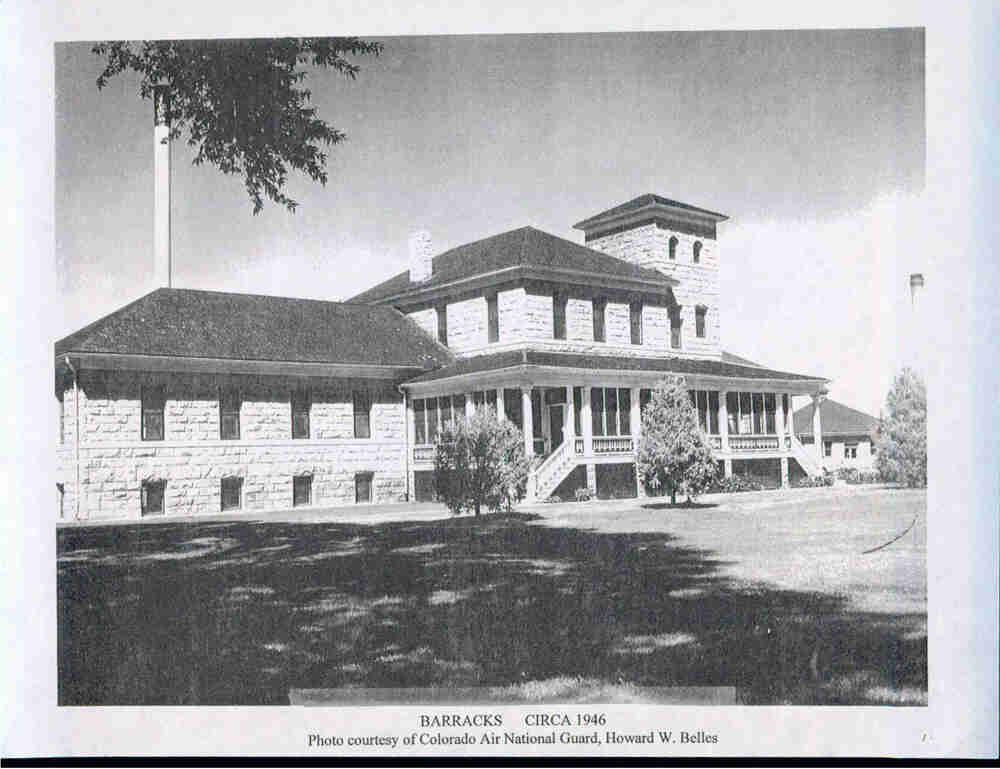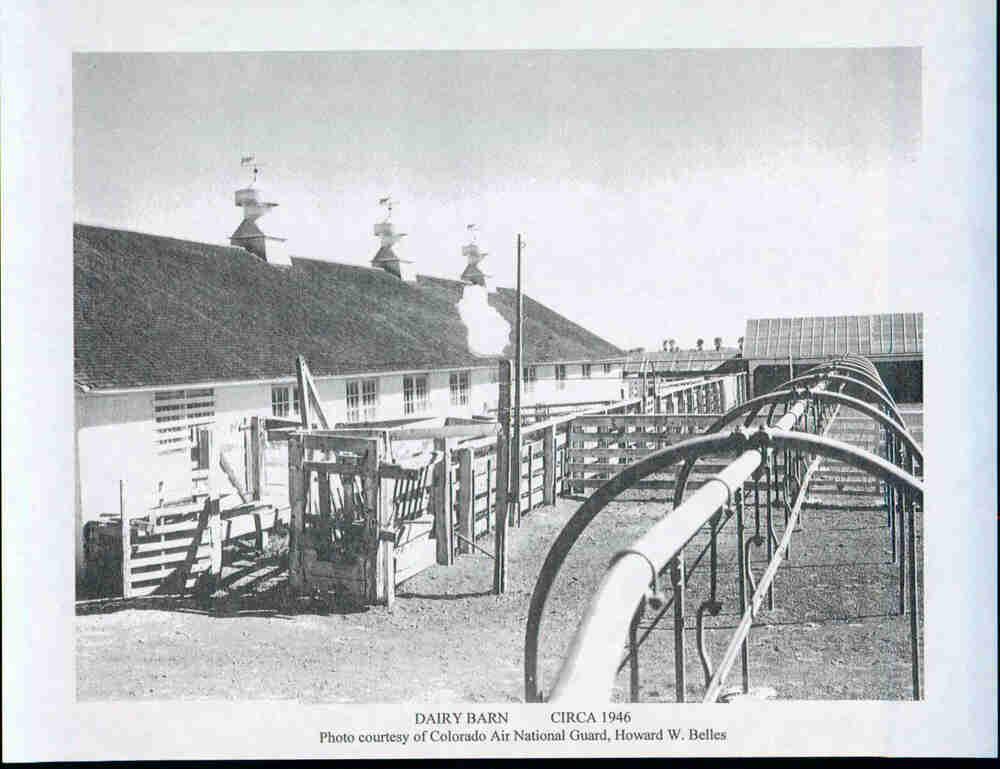State Soldiers’ and Sailors’ Home
Full Article
Located east of Monte Vista in the San Luis Valley (3694 Sherman Ave, Monte Vista, Colorado), the State Soldiers’ and Sailors’ Home was established in 1889 as a home for aging and disabled Civil War veterans in Colorado. The facility grew over the years to include cottages, apartments, social buildings, and a modern nursing home, and it has housed veterans of every major American conflict since the Civil War. Now known as the Colorado State Veterans Center at Homelake, the facility offers semi-independent assisted living and full-time nursing care for veterans, their spouses or widows, and parents who have lost a child in military service.
Housing Veterans in Monte Vista
In 1889 the Grand Army of the Republic—the influential Civil War veterans’ organization—secured passage in the Colorado state legislature of a bill to provide a home for the state’s aging and disabled veterans. As the bill made its way through the legislature, state senator Adair Wilson of Del Norte managed to attach a provision that the home had to be built in the San Luis Valley. This outraged Denver real estate interests, who had assumed the home would be located in or near the capital, and quickly launched a competition between the San Luis Valley towns of Alamosa, Del Norte, and Monte Vista to secure the home. Monte Vista won the bidding war by offering the home 160 acres of land and a 67-acre lake a few miles east of town, as well as perpetual water rights and $9,000 in cash.
In 1891 the State Soldiers’ and Sailors’ Home started operations. Construction on the first building, a combined hospital and barracks, started on July 4 and was completed in November. Soon the building was filled to capacity, and plans were in progress to expand the home with another barracks, a chapel, and a commander’s residence. Meanwhile, nearby Stanger Lake was dredged and deepened to make it less swampy. It was renamed Sherman Lake and is now known as Homelake.
Financial Crisis and Farming
The early years at the Soldiers’ and Sailors’ Home were difficult. Denver real estate interests were trying to choke off state funds as a way of pressuring the home to move to Denver. What little funding the institution did receive was being mismanaged by the home’s commander. And after the Panic of 1893, the number of veterans trying to get into the home soared. By 1894 the home faced a financial crisis. It survived thanks to the Colorado branch of the Grand Army of the Republic, which raised money to keep it alive.
The Soldiers’ and Sailors’ Home also increased its financial stability by making the institution largely self-sufficient. As part of this effort, the home started to focus on agricultural production—especially under the leadership of Chauncey Aldrich, who became commander in 1903. An orchard of 285 trees was planted in 1902. The farm provided meaningful work for residents, who helped with farming and raised cows, chickens, and hogs. This work provided the home with its food as well as a source of income, as it sold surplus to other state institutions. In 1906 the home made a profit of $2,000, and by 1907 it was out of debt.
State legislative appropriations in 1919 and 1922 allowed the Soldiers’ and Sailors’ Home to improve and expand its farm. At its height, the property grew to more than 600 acres. The home had highly regarded dairy cows, a huge potato crop, and its own slaughterhouse and smokehouse.
Growth and Change
When the Soldiers’ and Sailors’ Home opened in 1891, it had only one building and a cemetery. Over the next fifty years the home expanded significantly, with several bursts of construction. In 1898 the home added administrative buildings and other facilities made of local rhyolite stone—the Administration Building, the Superintendent’s Residence, the Paden-Meyer Memorial Chapel (which also housed the library and post office), the Main Recreation Hall, and the Central Dining Hall. The facility’s original 1891 building was demolished in the 1960s, leaving these 1898 buildings as the oldest remaining.
Another round of construction occurred in the 1910s, including new types of residential buildings that provided more privacy for residents and their wives, who were now allowed to live at the home for the first time. In 1914–15 the home’s first cottages were built, and in 1919–20 the home added four brick apartment buildings with eight units each. Built to house a growing population of veterans’ wives, widows, and mothers, the apartment buildings near Homelake were known as Petticoat Lane.
In 1928 a new infirmary was built to provide better medical care than could be offered at the original 1891 hospital and barracks building. At the time, the infirmary was one of the best medical facilities in the San Luis Valley. The last major stage of construction at the Soldiers’ and Sailors’ Home came during the late 1930s, when the Works Progress Administration (WPA) provided roughly $50,000 of labor and performed about $200,000 worth of improvements. WPA workers built new cottages, apartment buildings, and garages, and did maintenance work on a variety of older structures.
The facilities and farm at the Soldiers’ and Sailors’ Home offered residents a variety of opportunities for work and relaxation. Residents worked at least one six-hour day per week, for which they were paid a small wage. This left them plenty of time for fishing in Homelake, hiking, watching movies in the chapel (which began doubling as a theater in 1911), playing billiards in the Game Room, doing needlework in the Ladies’ Lounge, and attending dances at the Main Recreation Hall. The home’s grounds, which were planted with cottonwoods and evergreens throughout the twentieth century, became a popular place for picnics and celebrations among Monte Vista families.
After World War II, the Soldiers’ and Sailors’ Home suffered from funding cuts and administrative problems. By the 1950s federal inspectors were complaining about the conditions of the aging buildings. In 1957 Governor Stephen McNichols quietly floated the idea of selling the facility to the federal government to use as a school for Navajo children, but the proposal went nowhere. The home sold some of its farmland to generate revenue, and enrollment declined.
In 1965 the Soldiers’ and Sailors’ Home was renamed the Colorado State Veterans Center. With average life expectancy increasing, the home began to care for more aging and senile veterans who previously would have been sent to the state mental institution in Pueblo. This new focus on providing medical care to aging veterans helped the institution survive and grow. In the early 1990s the home added a three-wing nursing home that could provide up to sixty aging veterans with full-time modern medical care.
Today
In 1995 the Soldiers’ and Sailors’ Home was listed on the State Register of Historic Properties, but it continued to suffer from a lack of funding that made building maintenance difficult. By 2005, deferred maintenance of historic buildings at the home led the nonprofit Colorado Preservation Inc. to name it one of the state’s Most Endangered Places. The designation helped spur new preservation efforts, including the establishment of the Homelake Historic Preservation and Restoration Foundation. Over the next decade the Colorado Department of Human Services secured State Historical Fund (SHF) grants to prepare a new master plan for the site and rehabilitate the cottages, chapel, and library, while the Homelake Foundation received SHF grants to prepare a historic structure assessment and begin an exterior rehabilitation project on the Administration Building.
A 2002 statute established the Soldiers’ and Sailors’ Home as a repository for all unclaimed military memorabilia in Colorado. To house and display the collection, the Homelake Foundation started the Homelake Veterans’ History Museum, which is housed in the old Dining Hall. In the future, the foundation plans to partner with the San Luis Valley Museum Association and Monte Arts Council to turn the Administration Building into the Homelake Interpretive History and Conference Center, which will include an events center and educational exhibits on military history and historic preservation.































